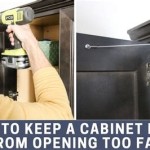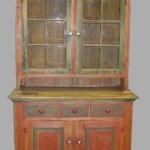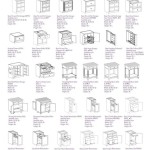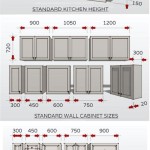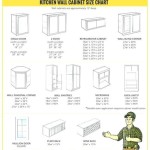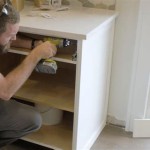How To Remove a Sink Cabinet Bottom
Removing the bottom of a sink cabinet is a task often required for various plumbing repairs, leak remediation, or even cabinet replacement. This process, while seemingly straightforward, involves several steps that must be followed carefully to avoid damaging the cabinet structure, plumbing lines, or adjacent fixtures. This article provides a comprehensive guide on how to safely and effectively remove a sink cabinet bottom.
Before commencing any work, safety precautions are paramount. Water lines and electrical components may be present within or around the sink cabinet. Consequently, shutting off the water supply and disconnecting any electrical power to the area is essential. This measure mitigates the risk of electric shock or water damage during the removal process. Furthermore, wearing appropriate safety gear, such as safety glasses and gloves, is advisable to protect against splinters, dust, or potential irritants.
Additionally, gather the necessary tools. These typically include a utility knife, a pry bar, a screwdriver (both Phillips head and flathead), a hammer, a reciprocating saw (optional), and potentially a stud finder. The specific tools needed may vary depending on the construction of the cabinet and the method of attachment used for the bottom panel. Having these tools readily available will streamline the removal process.
Identifying the Attachment Method
The initial step in removing a sink cabinet bottom is to determine how it is attached to the cabinet frame. Several methods are commonly employed, each requiring a different approach for removal. Common attachment methods include: glued-in panels, stapled panels, screwed-in panels, and tongue-and-groove construction.
Glued-in Panels: These panels are secured using adhesive applied directly to the frame. Removal requires carefully separating the panel from the frame using a combination of scoring with a utility knife and prying with a pry bar. Patience is crucial to avoid splintering the surrounding wood.
Stapled Panels: These panels are held in place with staples driven into the cabinet frame. Removal involves prying the panel loose and then using pliers or a staple remover to extract the staples. Exercise caution to prevent damage to the cabinet frame during staple removal.
Screwed-in Panels: These panels are attached using screws. Removal is straightforward; simply locate and unscrew all the screws securing the panel to the frame. Ensure the screws are collected and stored safely to prevent accidental injury.
Tongue-and-Groove Construction: In this method, the bottom panel fits into a groove cut into the cabinet frame. Removal typically requires carefully tapping the panel out of the groove using a hammer and a block of wood. Apply gentle pressure to avoid cracking or splitting the panel.
Once the attachment method is identified, the appropriate technique can be applied to begin the removal process.
Removing Glued or Stapled Panels
For sink cabinet bottoms attached with glue or staples, a methodical approach is required to separate the panel from the cabinet frame without causing significant damage. The first step is to score the perimeter of the panel where it meets the frame using a utility knife. This scoring helps to sever the bond between the panel and the frame, making prying easier.
After scoring, gently insert a pry bar between the panel and the frame. Apply steady, even pressure to gradually separate the panel. Work around the perimeter of the panel, prying a little at a time to distribute the force and prevent splintering. If considerable resistance is encountered, re-score the area with the utility knife and try again. Patience is key to this process.
If staples are present, they will likely pull out partially as the panel is pried loose. Once the panel is removed, use pliers or a staple remover to extract any remaining staples embedded in the cabinet frame. Be careful not to gouge or scratch the surrounding wood while removing the staples.
In cases where the glue bond is exceptionally strong, a heat gun can be used to soften the adhesive. Apply heat sparingly and evenly to the perimeter of the panel, testing the pry bar periodically to assess the effectiveness of the heat. Overheating the adhesive can damage the surrounding wood, so caution is advised.
Once the glued or stapled panel is removed, inspect the cabinet frame for any damage. Minor splintering or scratches can be repaired with wood filler and sandpaper. More significant damage may require more extensive repairs.
Removing Screwed or Tongue-and-Groove Panels
Removing sink cabinet bottoms secured with screws is the most straightforward of all the methods. Locate all the screws attaching the panel to the frame and use a screwdriver (either Phillips head or flathead, depending on the screw type) to unscrew them. Retain the screws for potential reinstallation if the panel needs to be replaced.
Once all the screws are removed, the panel should lift away easily. If the panel is stuck, check for any hidden screws or remaining adhesive. A gentle tap with a hammer and a block of wood may help to loosen a stubborn panel.
For tongue-and-groove panels, the removal process involves carefully tapping the panel out of the groove. Position a block of wood against the edge of the panel and gently tap the block with a hammer. Work around the perimeter of the panel, tapping a little at a time to gradually dislodge it from the groove. Avoid striking the panel directly with the hammer, as this can damage the wood.
If the panel is particularly tight, a penetrating oil or lubricant can be applied along the groove to help loosen the panel. Allow the lubricant to soak in for a few minutes before attempting to tap the panel out. A heat gun, used cautiously, can also help to expand the groove slightly, making removal easier.
Once the tongue-and-groove panel is removed, inspect the groove for any debris or obstructions. Clean the groove thoroughly before attempting to reinstall a new panel.
In some cases, particularly with older cabinets, the panel may be both glued and screwed in place. In such instances, both removal techniques must be combined. Begin by unscrewing all visible screws. Then, follow the process outlined for removing glued panels, scoring the perimeter and carefully prying the panel loose.
Regardless of the attachment method, it's also crucial to be aware of any plumbing or electrical lines that might be running behind or through the cabinet bottom. Avoid applying excessive force or using tools that could potentially damage these lines. If such lines are present, carefully maneuver the panel around them during removal or consult a professional plumber or electrician for assistance.
After the sink cabinet bottom is removed, a thorough cleaning of the interior of the cabinet is recommended. This will help to identify any hidden leaks or potential problems. Any mold or mildew should be addressed immediately with an appropriate cleaning solution. Before replacing the cabinet bottom, ensure the area is completely dry to prevent future mold growth.
If a replacement sink cabinet bottom is required, measure the dimensions of the old panel carefully to ensure a proper fit. Consider using a similar material for the replacement panel, or upgrade to a more durable or water-resistant material if desired. When installing the new panel, use the same attachment method as the original panel, or consider using a more secure method if the original method proved inadequate.
Finally, remember to dispose of the old sink cabinet bottom properly. Depending on the material and local regulations, it may be recyclable or require disposal at a designated waste facility.

Replace Sink Cabinet Floor

How To Remove Kitchen Sink Base Cabinet
:max_bytes(150000):strip_icc()/8_remove-sink-base-cabinet-56a4a26d3df78cf772835b30.jpg?strip=all)
How To Remove A Bathroom Vanity Cabinet

How To Replace Rotted Sink Base Cabinet Floor Bottom Easy Home Mender
:max_bytes(150000):strip_icc()/7_remove-vanity-top-56a4a26d3df78cf772835b2d.jpg?strip=all)
How To Remove A Bathroom Vanity Cabinet

Rotted Sink Cabinet Floor How To Replace

Rotted Sink Cabinet Floor How To Replace

Kitchen Removing Base Cabinet Countertops Backsplash

How To Remove And Install Kitchen Cabinets

How To Remove A Kitchen Sink 14 Steps With Pictures Wikihow
Related Posts

